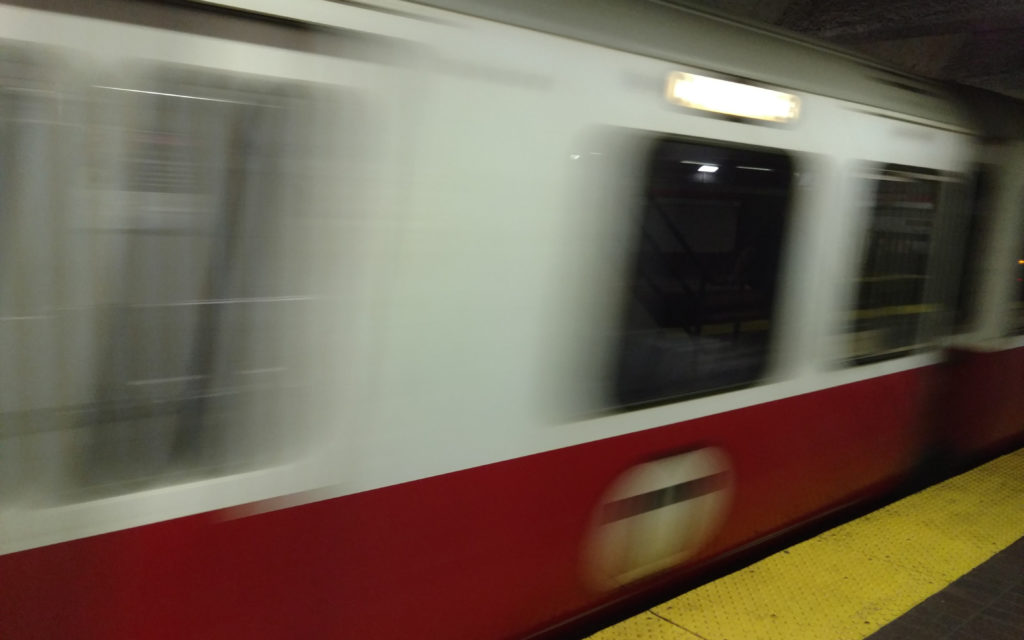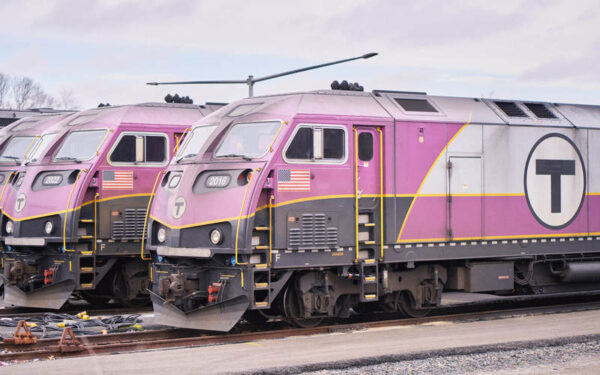
The Red Line won’t be back to full capacity for nearly three months after a derailment in June. The fare increases that took effect July 1 should be delayed for that long as well. Photo: Sydney Moyer.
This week, the price of getting around the Boston area went up. With the latest MBTA fare hikes, my daily commute to work on the Orange Line costs more, as do my coworkers’ rides on the T’s other lines and the commuter rail.
The fare increase comes barely a month after two back-to-back derailments on the Red and Green Lines disrupted service for thousands of riders. The Red Line is still not running at full capacity – and won’t be until after Labor Day. That means extra delays and crowded trains for Red Line riders, even as the cost for their daily ride goes up.
We have a right to a safe, affordable, and reliable transportation system. The T is currently far from it. It’s inappropriate and unfair to ask riders to pay more when our public transportation system can’t even get us to and from work on time.
What’s more, derailments, delays, and unreliable service cause riders to lose confidence in the system – not to mention the economic and personal cost of time spent on a frustratingly long commute. And beyond the current crises, service on our buses is subpar every day. Asking riders to pay more for such inconsistent service too often results in people turning to cars instead, whether their own or a ride-hail service, which clog our roads, pollute our air, and affect our climate.
Greater Boston can’t afford to wait to fix the T.
Full Service Should Resume Before People Pay More
While fare increases are part of the revenue needed to keep the MBTA’s complex and necessary system running, they must be reasonable and predictable. It’s unreasonable to ask people to pay more money to take the Red Line from Ashmont to Park Street when a commute that should be 25 minutes takes nearly an hour because of reduced service.
We understand that the fare hikes were planned well before last month’s derailments. But if the Red Line won’t be back to full capacity for nearly three months, then the fare increases should be delayed for that long as well. Raising fares now isn’t going to immediately resolve the Red Line problems, but people will immediately feel the impact of a more expensive, slower ride. The MBTA should be doing what it can to encourage people to keep using the transit system as they fix problems, not driving them off the T and into cars.
Problems Extend Beyond the Red Line
The Green and Red Line double derailments are part of a troubling trend, as T derailments are increasing year over year. Compared to 2014, when there were five incidents, we’ve already seen nine in 2019 – and we’re barely halfway through the year.
But it’s not only headline-making derailments and delays that are a problem. Many of us, especially bus riders, are dealing with poor service on a regular basis. Delays are frequent, as are dropped bus tripped—when the scheduled bus never even arrives. Over the past 30 days, bus riders experienced on-time performance of 67 percent – as compared to the commuter rail riders, whose trains were on time at a rate of 87 percent.
If we were assigning letter grades, the buses would rate a D, while the commuter rail would earn a B+. For the two weeks following the Red Line derailment, the subway would have earned an F.
We should expect A-level service no matter which mode of transportation we use. Given that bus lines tend to serve lower-income neighborhoods compared to many of the commuter rail lines, these performance numbers also raise issues of whether the T can provide fair and equitable service to all of its riders.
We cannot wait for our infrastructure to collapse before we prioritize safety upgrades and service enhancements.
Fare Hikes Harm Cash-Dependent Riders
CLF successfully advocated for the MBTA to spare bus fares, as well as senior, youth, and student passes, from the increased fares. By maintaining these fares, many people in need of affordable transportation will continue to be able to ride the T – so long as the T can provide sufficient buses and enough drivers to operate them.
However, the fare hikes that took effect Monday will still have a disproportionate impact on riders who pay in cash. It’s still 50 cents more expensive to ride the subway lines of the T with a CharlieTicket or cash instead of a CharlieCard and 30 cents more expensive to ride a bus with a CharlieTicket. For cash-dependent riders, who tend to be low-income, that extra dollar per round trip could be the difference between being able to pay for the ride or not. Our system should not punish people for using cash – getting around the city should be equitable for everyone, no matter how a person pays.
Accountability is Key
With the an anticipated $29.5 million in new revenue from the far hikes plus Gov. Charlie Baker’s one-time $50 million infusion for the T, riders must see improvements to their commute now. Those improvements should extend beyond fixing the Red Line – we must improve bus service and see real progress on long-awaited projects that will make riding the T easier, such as the Red-Blue Connector.
We also need transparency. The T should set improvement benchmarks and publicly communicate how our money is being spent. That way, we can all can hold the T accountable to providing the public transportation Greater Boston needs.




